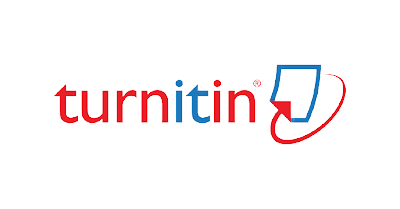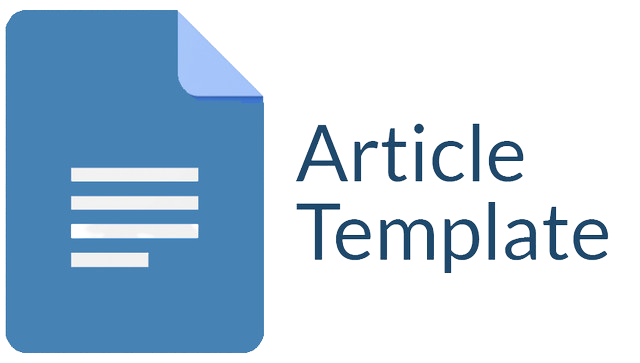IMPLEMENTASI PROYEK BUDIDAYA JAMUR TIRAM SEBAGAI PEMBELAJARAN KONTEKSTUAL DI SEKOLAH DASAR NEGERI SADARMANAH, KECAMATAN CAMPAKA MULYA, KABUPATEN CIANJUR
Abstract
Abstract: This study explores the implementation of an oyster mushroom cultivation project as a contextual learning model at Sadarmanah Elementary School, located in Campaka Mulya District. The objective of the project was to enhance students’ understanding of scientific and environmental concepts while simultaneously fostering practical skills, critical thinking, and character development. Using a project-based learning (PjBL) framework, students were actively engaged in every stage of the cultivation process, including planning, preparation, observation, and harvesting. Data collection methods included observation, interviews, student journals, and performance assessments. The findings reveal significant improvements in students' conceptual understanding of biology and ecosystems, as well as the development of soft skills such as collaboration, responsibility, and environmental awareness. Moreover, the project served as a bridge between classroom theory and real-life applications, aligning well with the principles of the Merdeka Curriculum and the Profile of Pancasila Students. This study suggests that contextual, environmentally-based project learning is an effective strategy to enrich learning experiences and support the holistic growth of elementary students.
Downloads
References
Corneasari, M. L. (2025). Mewujudkan Pendidikan yang Efektif dengan Pendekatan Kontekstual di Masyarakat. Khidmat: Journal of Community Service, 2(1), 31–42. https://doi.org/https://doi.org/10.31629/khidmat.v2i1.7056
Johnson, E. B. (2002). Contextual teaching and learning: What it is and why it’s here to stay. Corwin Press.
Maryani, M. (2024). Strategies for Implementing Contextual Teaching and Learning Approach in Learning Fiqh at MI As Sidqiyah Siak: Strategi Penerapan Pendekatan Contextual Teaching and Learning dalam Pembelajaran Fiqih di MI As Sidqiyah Siak. COSMOS: Jurnal Ilmu Pendidikan, Ekonomi Dan Teknologi, 1(6), 684–695. https://doi.org/10.37567/cosmos.v1i6.272
Miles, Matthew B., Huberman, A. M., & Saldana, J. (2014). Qualitative Data Analysis. New Delhi: SAGE Publications.
Muhartini, M., Mansur, A., & Bakar, A. (2023). Pembelajaran kontekstual dan pembelajaran problem based learning. Lencana: Jurnal Inovasi Ilmu Pendidikan, 1(1), 66–77. https://doi.org/10.55606/lencana.v1i1.881
Pratiwi, D. (2023). Integrasi pendidikan karakter dalam pembelajaran pendidikan kewarganegaraan untuk mengembangkan karakter siswa sekolah dasar. Proceedings Series of Educational Studies, 178–184.
Prayuda, W. R., Hafizd, J. Z., & Haryati, Y. (2023). Pengembangan Home Industry Jamur Tiram Bagi Kesejahteraan Masyarakat Desa Gembonganmekar Kabupaten Cirebon Perspektif Maslahah Mursalah. Mahkamah : Jurnal Kajian Hukum Islam, 8(1), 41. https://doi.org/10.24235/mahkamah.v8i1.13320
Sahira, S., Rejeki, R., Jannah, M., Gustari, R., Nasution, Y. A., Windari, S., & Reski, S. M. (2022). Implementasi Pembelajaran Ips Terhadap Pembentukan Karakter Siswa Di Sekolah Dasar. Autentik: Jurnal Pengembangan Pendidikan Dasar, 6(1), 54–62. https://doi.org/https://doi.org/10.36379/autentik.v6i1.173
Sanjaya, D. H. W. (2006). Strategi pembelajaran berorentasi standar proses pendidikan.
Suselo, D. (2020). PENINGKATAN EKONOMI MELALUI BUDIDAYA JAMUR TIRAM DENGAN PEMANFAATAN ASET TIDAK PRODUKTIF. An-Nisbah: Jurnal Ekonomi Syariah, 7(2), 302–324. https://doi.org/10.21274/an.v7i02.3211
Tyaputri, V. C., & Utami, R. D. (2024). Penguatan Profil Pelajar Pancasila di Sekolah Dasar melalui Gelar Karya: Gaya Hidup Berkelanjutan. Didaktika: Jurnal Kependidikan, 13(2), 2283–2296.
Copyright (c) 2025 Nelly Amalia, Ricky Yoseptry, Tanti Tanti, Nenden Diana, Riscky Risgianti

This work is licensed under a Creative Commons Attribution-ShareAlike 4.0 International License.
Jurnal allows anyone to compose, correct, and do derivative works, even for commercial purposes, as long as they credit for the original work. This license is the freest. It is recommended for maximum distribution and use of licensed material.
The submitted paper is assumed not to contain any proprietary materials that are not protected by patent rights or patent applications; The responsibility for technical content and protection of proprietary materials rests with the authors and their organizations and not the responsibility of journal or its editorial staff. The primary (first/appropriate) author is responsible for ensuring that the article has been viewed and approved by all other authors. The author's responsibility is to obtain all necessary copyright waivers to use any copyrighted material in the manuscript before submission.
Jurnal Pendidikan, Sains dan Teknologi allows the author(s) to hold the copyright without restrictions and allow the author(s) to retain publishing rights without restrictions. Jurnal Pendidikan, Sains dan Teknologi CC-BY-SA or an equivalent license as the optimal license for the publication, distribution, use, and reuse of scholarly work. Jurnal Pendidikan, Sains dan Teknologi allows the author(s) to hold the copyright without restrictions and allow the author(s) to retain publishing rights without restrictions. Jurnal Pendidikan, Sains dan Teknologi CC-BY-SA or an equivalent license as the optimal license for the publication, distribution, use, and reuse of scholarly work.
In developing strategy and setting priorities Jurnal Pendidikan, Sains dan Teknologi recognize that free access is better than priced access, libre access is better than free access, and libre under CC-BY-SA or the equivalent is better than libre under more restrictive open licenses. We should achieve what we can when we can. We should not delay achieving free in order to achieve libre, and we should not stop with free when we can achieve libre.
Jurnal Pendidikan, Sains dan Teknologi is licensed under a Creative Commons Attribution-ShareAlike 4.0 International License.
You are free to:
- Share a copy and redistribute the material in any medium or format
- Adapt a remix, transform, and build upon the material for any purpose, even commercially.
- The licensor cannot revoke these freedoms as long as you follow the license terms.






